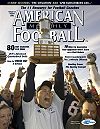AMERICAN FOOTBALL MONTHLY THE #1 RESOURCE FOR FOOTBALL COACHES
Article CategoriesAFM Magazine
|
The Situationby: AFM Editorial Staff© More from this issue You’re on defense near your goal line. While you’ve contained the run, your opponent now has a first down at your four-yard line. They are in a spread offense with a flanker on one side and a split end on the other. Your opponent decides to pitch to the tailback and sweep right end. How do you defend them from scoring? What defense do you use to stop their attack? Ron Beaucham, Head Coach, Heritage School, Newnan (GA) AFM subscriber since November, 2005 The defense I would use is....The full article can only be seen by subscribers. Subscribe today!
|
|
|||||||
| HOME |
MAGAZINE |
SUBSCRIBE | ONLINE COLUMNISTS | COACHING VIDEOS |
Copyright 2025, AmericanFootballMonthly.com
All Rights Reserved





